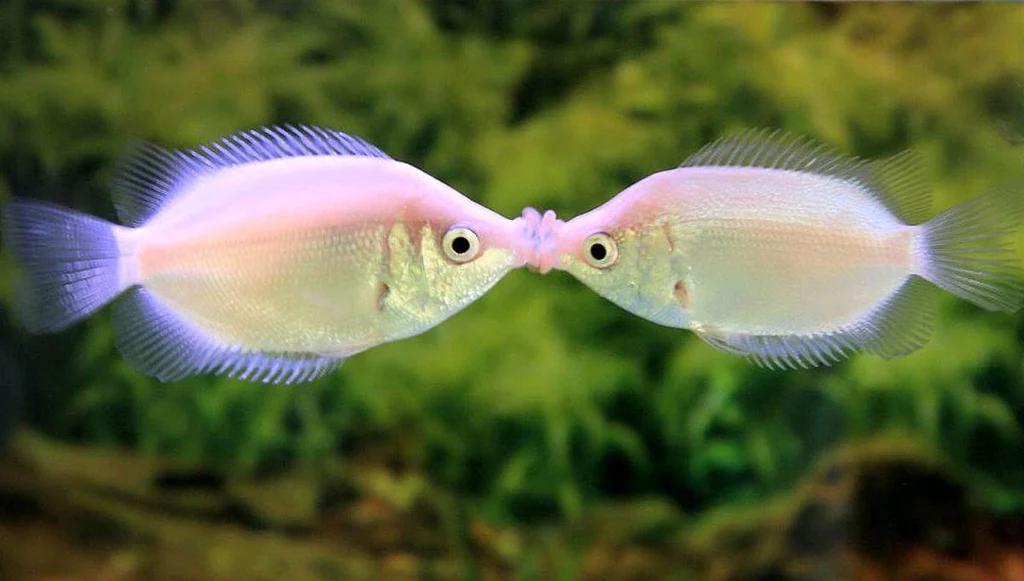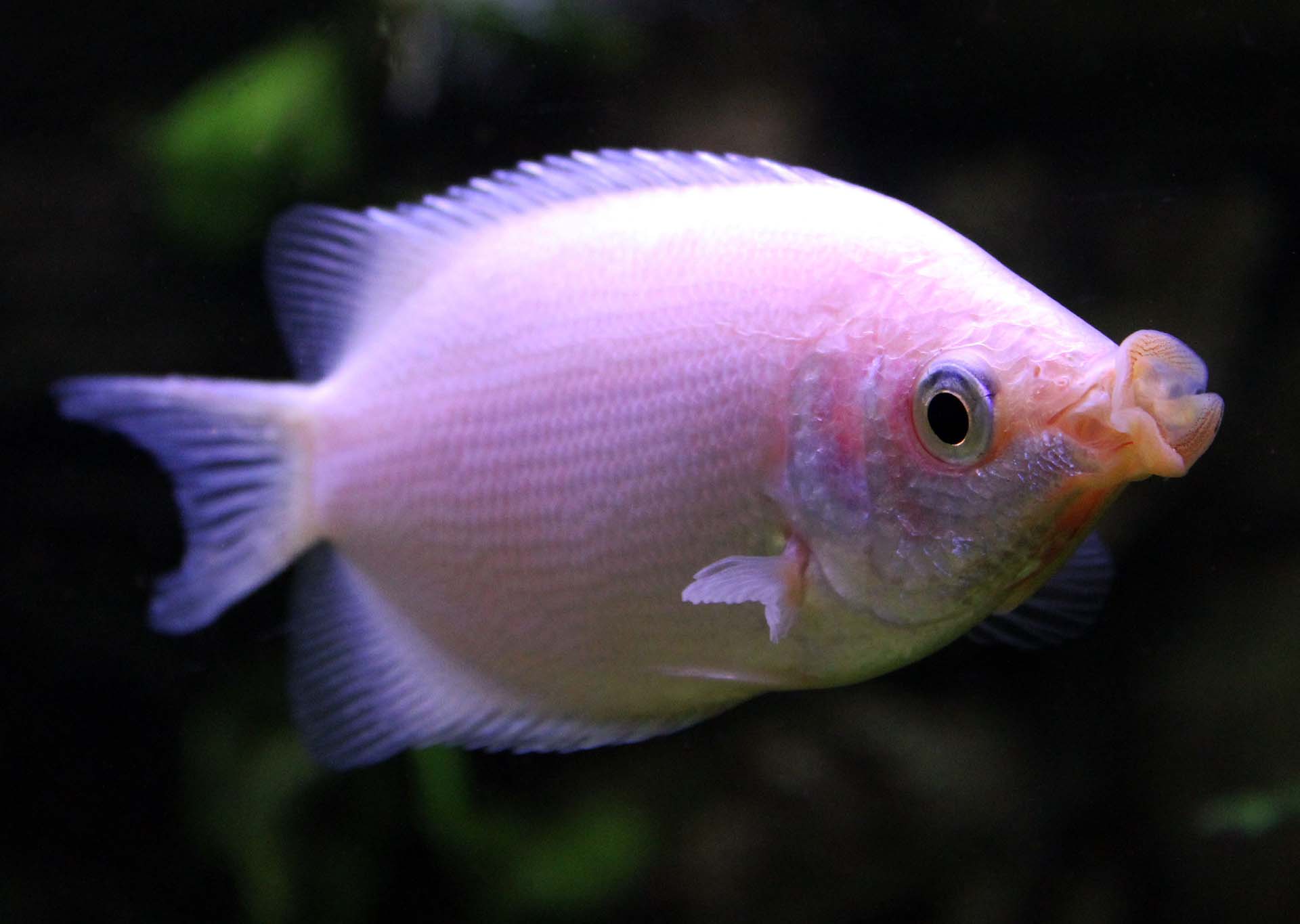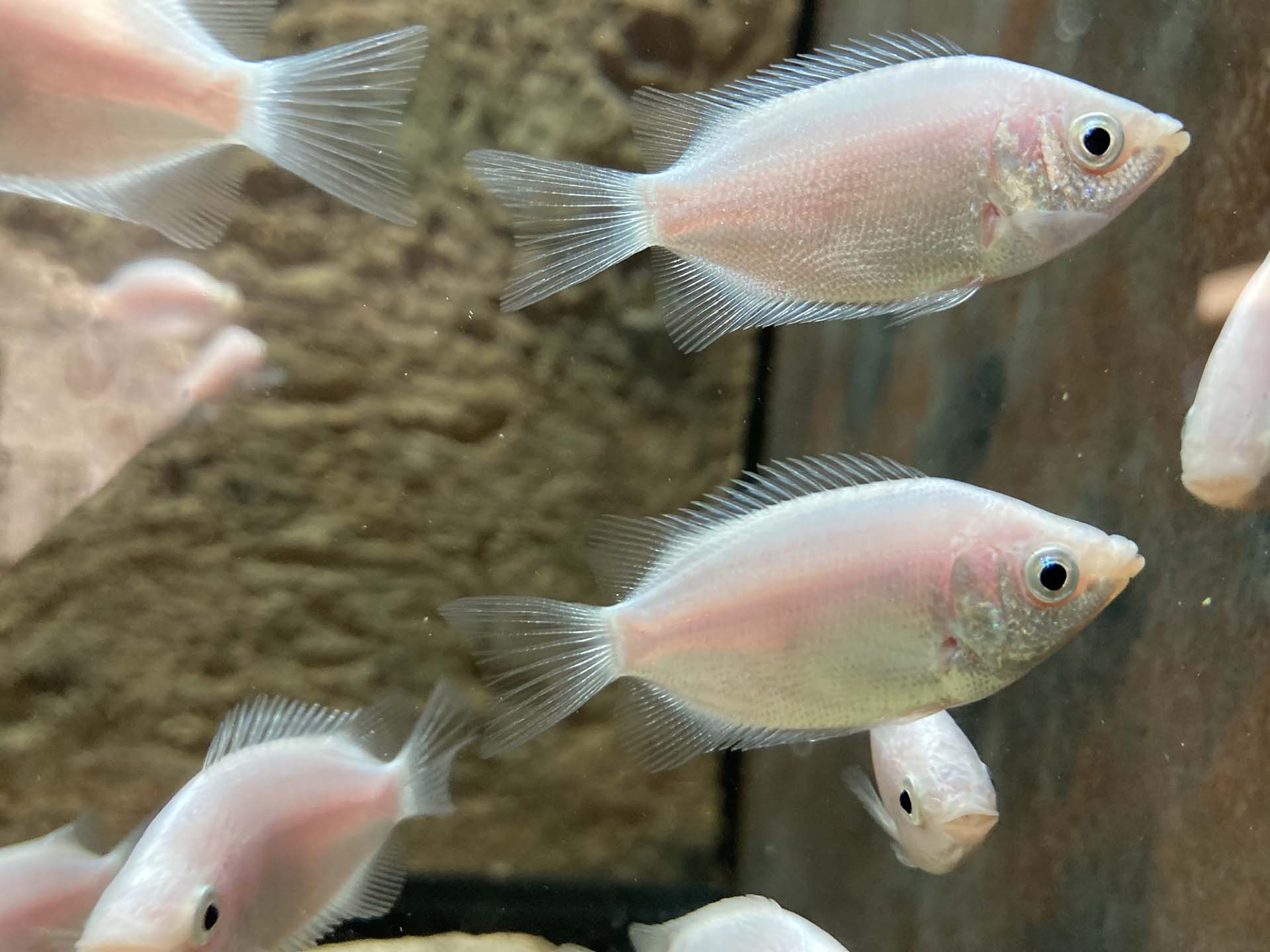In the colorful tapestry of aquatic life, there exists a mesmerizing species that goes beyond the ordinary – the intriguing kissing fish, better known as the kissing gourami. These Southeast Asian natives, adorned in hues that mimic a sunset’s warmth, fascinate with their elongated bodies and a behavior that’s far from conventional.
Content Table
Join me as we unravel the enigma behind their unique ‘kisses,’ exploring the depths of the kissing fish world, understanding their rituals, and discovering the harmony within their seemingly puckered encounters – why do kissing fish kiss?
What are Kissing Fish
Kissing Fish Species Profile
The kissing fish, scientifically known as the kissing gourami (Helostoma temminkii), kissing fish or kissers, are medium-sized tropical freshwater fish. Between 5 and 30 dGH water hardness and 6.8 to 8.5 pH value, they can grow between 30 and 40 cm (12 and 15.5 in) in a 22 to 28 °C (72 to 82 °F) fish tank. As a long-lived fish of 25 years, they stand as a distinctive and captivating species in the aquatic world.
Originating from the lush waters of Southeast Asia, particularly prevalent in countries like Thailand, Indonesia, and Malaysia, these enchanting kissing gourami boast a remarkable presence in freshwater habitats. Sporting elongated bodies adorned with hues ranging from soft pinks to shimmering silvers, their appearance alone is a testament to their allure.
| Scientific Name | Helostoma temminkii | Normal Name | kissing fish, kissing gourami, kissers |
| Origin | Southeast Asia | Lifespan | Up to 25 years |
| Length | 30 to 40 cm | Temperature | 22 to 28 °C |
| Water Hardness | 5 to 30 dGH | pH value | 6.8 to 8.5 |
Distribution
The kissing fish’s natural habitat spans shallow, slow-moving freshwater environments such as rivers, streams, and marshes, characterized by abundant vegetation. With a knack for adapting to various water conditions, these resilient creatures have also found a comfortable abode in man-made environments like ponds and aquariums worldwide.
Characteristic Traits
What sets the kissing gourami apart is not just their vibrant appearance, but also their distinct behavioral traits. Their elongated bodies, paired with protruding mouths, grant them a unique silhouette. Their peaceful demeanor makes them an ideal addition to community aquariums, where they thrive in small groups, with at least one male and two females.
One of the most intriguing aspects of these fish is their behavior—most notably, their penchant for engaging in “kissing” rituals, which, contrary to its name, isn’t an act of affection but a means of establishing dominance within their social hierarchy.

Why do Kissing Fish Kiss
The Enigmatic Kiss
Contrary to the romantic connotation the term implies, the kissing behavior of the kissing fish serves a different purpose altogether. It’s not an act of affection, but a means of communication steeped in their social dynamics. The kiss involves two fish locking lips, pressing their mouths together in what appears to be an intimate gesture but is, in fact, a display of dominance or assertion of hierarchy.
Insight into Their Behavior
The reasons behind this kissing behavior lie in their innate social structure. Kissing gouramis are hierarchical creatures, establishing a pecking order within their groups. These lip-locking interactions are their way of negotiating social status and territory, a silent dialogue that prevents more aggressive confrontations. It’s a form of communication ingrained in their nature, a means to maintain harmony within their community.
The Social Significance
Understanding the nuances of their kissing behavior sheds light on their complex social interactions. It’s not just a display but a language spoken among them, a code that helps maintain order without resorting to outright aggression. These rituals serve a purpose beyond what meets the eye, illustrating the intricate social fabric woven within their aquatic world.

Feeding Kissing Fish in the Tanks
Nourishing the Kissing Gourami
Feeding these captivating creatures in your aquarium is more than just providing sustenance; it’s about meeting their specific dietary requirements for optimal health. Kissing gouramis, known for their omnivorous nature, have varied feeding habits, contributing to their vibrant well-being.
Understanding Their Dietary Preferences
These fish thrive on a diverse diet that mimics their natural habitat. Their menu should include a blend of live or frozen foods like bloodworms, brine shrimp, and daphnia. Additionally, high-quality flake or pellet food designed for omnivores forms an essential part of their diet, ensuring they receive balanced nutrition.
Balancing Nutrition for Health
Maintaining a balanced diet is key to their overall health. Alongside protein-rich foods, incorporating vegetation is crucial. Blanched vegetables such as spinach or lettuce offer essential fiber and nutrients, promoting digestive health. Observing their feeding habits and adjusting their diet accordingly is vital for their well-being.
Feeding Frequency and Portions
Kissing gouramis are enthusiastic eaters, but can be prone to overeating. Offer food in small portions, sufficient for consumption within a few 2–5 minutes, to prevent overfeeding and water contamination. It’s advisable to feed them two to three times a day, ensuring they receive adequate sustenance without compromising water quality. An intelligent fish feeder is a better choice to auto-schedule the feeding portions and times when you’re busy.
Tailoring the Tank Environment
Creating an environment that complements their feeding habits is equally important. Ensuring a well-filtered tank with appropriate aeration and maintaining water quality contributes significantly to their health and digestion. Providing hiding spots and vegetation not only enriches their environment but also mimics their natural habitat, promoting their well-being.

More About Kissing Gourami
Kissing gouramis are not just lip-locking wonders; they possess some captivating traits! These gentle fish, despite their territorial rituals, are peace-loving and thrive in serene and well-planted tanks. They have labyrinth organs, enabling them to breathe air, and allowing occasional visits to the water surface. While they cherish plant-based foods, they’re not picky eaters and enjoy varied diets.
Do provide ample space and a harmonious community of at least 30 gallons, avoiding aggressive tank mates. Don’t forget to maintain water quality, as these beauties are sensitive to poor conditions. With their unique features and gentle demeanor, kissing gouramis stand out in aquatic kingdoms.
Related Topic
Iridovirus Dwarf Gourami Disease – Causes and Cures
To Sum Up
In essence, the enigmatic world of kissing fish reveals a complex social tapestry behind their lip-locking behavior. Far from romantic gestures, these interactions are a language of hierarchy and social order among these vibrant creatures. By understanding their needs, and behaviors, and creating a nurturing environment, enthusiasts can embrace the captivating nature of kissing gouramis, adding a touch of aquatic charm to their world.


Leave a comment